MaryAnn Bernal's Blog, page 95
June 11, 2016
History Trivia - Troy sacked
Published on June 11, 2016 02:00
June 10, 2016
Secrets of Stone Age Jade Axes Revealed in Scotland
Ancient Origins
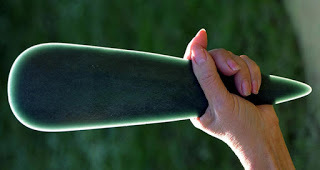
A new exhibition at the National Museum of Scotland showcases a rarely seen collection of Stone Age jade axeheads. Most of them were brought to Scotland around 4,000 years BC. In those times they were at least 100 years old.
The display that opened on May 20 contains a collection of jade axeheads which were created over 6,000 years ago. The artifacts were made in the Italian Alps, far from Scotland. The axeheads were brought to Scotland by pioneering farming groups from the northern region of France. The history of the axeheads was discovered by a French-led group of researchers involved in National Museums Scotland ''Projet [Project] Jade''.
Dr. Alison Sheridan, Principal Curator of Early Prehistory in the Department of Scottish History and Archaeology, said that the Museum hopes to ''inspire and fascinate'' modern people with the unique history of the ''extraordinary jade axeheads''.
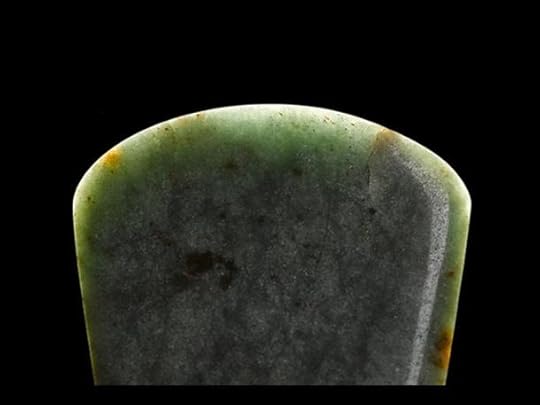 A Greenlaw axehead. (
National Museum of Scotland
)The jade axes are polished and it would have taken many hours to make one. They were probably used as ritual or ceremonial objects; however these artifacts were important for the expansion of a civilization as well. The polished stone axes transformed society after the Ice Age. They allowed people to clear space in forests and plant crops more effectively than ever before. However, it is unlikely that the jade axes were used to cut large quantities of wood.
A Greenlaw axehead. (
National Museum of Scotland
)The jade axes are polished and it would have taken many hours to make one. They were probably used as ritual or ceremonial objects; however these artifacts were important for the expansion of a civilization as well. The polished stone axes transformed society after the Ice Age. They allowed people to clear space in forests and plant crops more effectively than ever before. However, it is unlikely that the jade axes were used to cut large quantities of wood.
New research may solve mystery of enigmatic Sanxingdui civilization of ChinaFive Huge Bronze Age axes discovered in a field in Jutland, DenmarkMoreover, the researchers have argued that the axes were status symbols - a luxurious confirmation of the power and prestige of the owner. Jade is not found in Britain, the rock comes from Mont Viso, located south-west of Turin and Mont Beigua above Geona in Italy.
Apart from the jadeitite, omphacitite, nephrite, and eclogite stones were also discovered. However, for many decades archaeologists used the term ''jade'' for all of them. The axeheads were made near high mountains. People who made these axeheads climbed to heights of over 2,000 meters (6561.68 ft.) in the Italian Alps.
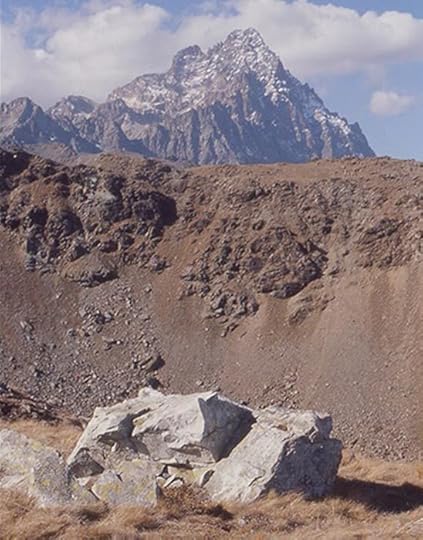 Block of raw jadeitite from the Oncino valley with Mont Viso in the background. (
Projet Jade
)According to the researchers, the people who lived there during the Neolithic period associated mountains with the realm of the gods. The Neolithic people probably also believed that pieces of the mountains had powers which could heal and protect.
Block of raw jadeitite from the Oncino valley with Mont Viso in the background. (
Projet Jade
)According to the researchers, the people who lived there during the Neolithic period associated mountains with the realm of the gods. The Neolithic people probably also believed that pieces of the mountains had powers which could heal and protect.
Jade axeheads are in collections of some other museums as well. According to Gillian Varndell, Curator of the British Museum (which owns a jade axehead discovered in Canterbury):
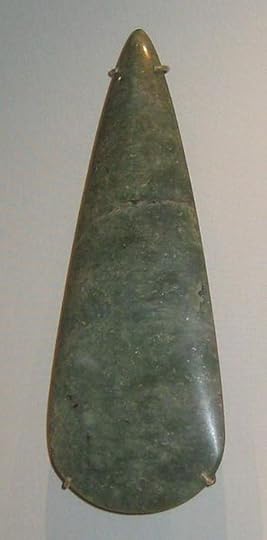 Jade axe, Canterbury, Kent, England, Neolithic, about 4,000-2,000 BC. (
Public Domain
)Nowadays, over 1,600 large axeheads made from jadeitite, omphacitite, nephrite, and eclogite are known in Europe. Excavations in Ireland suggest that they are not very popular artifacts. There, only four out of over 21,000 stone axeheads were found to be made of jadeite.
Jade axe, Canterbury, Kent, England, Neolithic, about 4,000-2,000 BC. (
Public Domain
)Nowadays, over 1,600 large axeheads made from jadeitite, omphacitite, nephrite, and eclogite are known in Europe. Excavations in Ireland suggest that they are not very popular artifacts. There, only four out of over 21,000 stone axeheads were found to be made of jadeite.
Archaeologists began to analyze the jade axeheads for the first time in the 1940s. They examined the stone axes of the South-Western Group of Museums. In the 1960 and 1970s, a few researchers tried to explore the secrets of the jade axeheads, but the real progress in researching the origins of these artifacts was made Pierre and Anne-Marie Pétrequin, with their team known as Projet Jade.
They have taken a Europe-wide approach, locating axehead sources high in the mountains of northern Italy. On Monte Viso they discovered the quarries dated back to 5,200 BC. When people brought the jade axes to Brittany, they started to copy them in local fibrolite. In Ireland, copies were made in local stone sources too.
The rituals and ceremonies connected with the jade axeheads are still unknown. The team of researchers hopes that future work will bring about more information on this area.
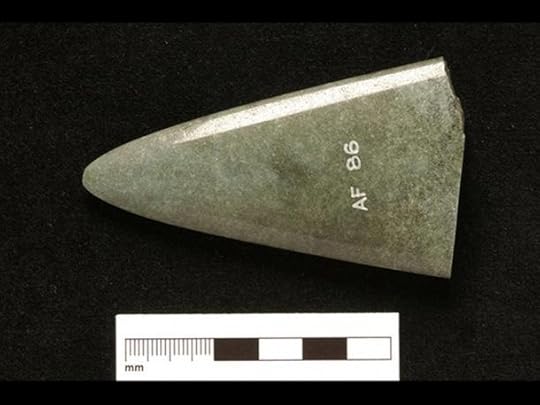 Fragment of deliberately-broken axehead, found near Douglas Castle, South Lanarkshire. The straight line along the bottom is due to the removal of a slice to make a petrological thin section during the 1960s. (
National Museum of Scotland
)Top image: A Stone Age Jadeitite axehead. Credit:
Projet Jade
Fragment of deliberately-broken axehead, found near Douglas Castle, South Lanarkshire. The straight line along the bottom is due to the removal of a slice to make a petrological thin section during the 1960s. (
National Museum of Scotland
)Top image: A Stone Age Jadeitite axehead. Credit:
Projet Jade
By Natalia Klimczak

A new exhibition at the National Museum of Scotland showcases a rarely seen collection of Stone Age jade axeheads. Most of them were brought to Scotland around 4,000 years BC. In those times they were at least 100 years old.
The display that opened on May 20 contains a collection of jade axeheads which were created over 6,000 years ago. The artifacts were made in the Italian Alps, far from Scotland. The axeheads were brought to Scotland by pioneering farming groups from the northern region of France. The history of the axeheads was discovered by a French-led group of researchers involved in National Museums Scotland ''Projet [Project] Jade''.
Dr. Alison Sheridan, Principal Curator of Early Prehistory in the Department of Scottish History and Archaeology, said that the Museum hopes to ''inspire and fascinate'' modern people with the unique history of the ''extraordinary jade axeheads''.
 A Greenlaw axehead. (
National Museum of Scotland
)The jade axes are polished and it would have taken many hours to make one. They were probably used as ritual or ceremonial objects; however these artifacts were important for the expansion of a civilization as well. The polished stone axes transformed society after the Ice Age. They allowed people to clear space in forests and plant crops more effectively than ever before. However, it is unlikely that the jade axes were used to cut large quantities of wood.
A Greenlaw axehead. (
National Museum of Scotland
)The jade axes are polished and it would have taken many hours to make one. They were probably used as ritual or ceremonial objects; however these artifacts were important for the expansion of a civilization as well. The polished stone axes transformed society after the Ice Age. They allowed people to clear space in forests and plant crops more effectively than ever before. However, it is unlikely that the jade axes were used to cut large quantities of wood.New research may solve mystery of enigmatic Sanxingdui civilization of ChinaFive Huge Bronze Age axes discovered in a field in Jutland, DenmarkMoreover, the researchers have argued that the axes were status symbols - a luxurious confirmation of the power and prestige of the owner. Jade is not found in Britain, the rock comes from Mont Viso, located south-west of Turin and Mont Beigua above Geona in Italy.
Apart from the jadeitite, omphacitite, nephrite, and eclogite stones were also discovered. However, for many decades archaeologists used the term ''jade'' for all of them. The axeheads were made near high mountains. People who made these axeheads climbed to heights of over 2,000 meters (6561.68 ft.) in the Italian Alps.
 Block of raw jadeitite from the Oncino valley with Mont Viso in the background. (
Projet Jade
)According to the researchers, the people who lived there during the Neolithic period associated mountains with the realm of the gods. The Neolithic people probably also believed that pieces of the mountains had powers which could heal and protect.
Block of raw jadeitite from the Oncino valley with Mont Viso in the background. (
Projet Jade
)According to the researchers, the people who lived there during the Neolithic period associated mountains with the realm of the gods. The Neolithic people probably also believed that pieces of the mountains had powers which could heal and protect.Jade axeheads are in collections of some other museums as well. According to Gillian Varndell, Curator of the British Museum (which owns a jade axehead discovered in Canterbury):
''The axe has been a powerful symbol for thousands of years in many parts of the world. It means different things to different societies. To the early farmers the everyday working axehead was an essential tool for clearing land for cultivation. Objects like the Canterbury jade axehead, however, were not used for farming, they were symbols of status. Ownership of one was undoubtedly restricted. The green color of jade might itself have been significant, as copies were made using local greenish rock. More than a hundred axeheads made from jade have been found in Britain and Ireland. Most of them have been accidental and isolated, so there is no sense of a pattern.''Taosi Confirmed as 4,200-Year-Old Legendary Capital of Chinese Hero EmperorThe Mysterious Origin of the Jade Discs
 Jade axe, Canterbury, Kent, England, Neolithic, about 4,000-2,000 BC. (
Public Domain
)Nowadays, over 1,600 large axeheads made from jadeitite, omphacitite, nephrite, and eclogite are known in Europe. Excavations in Ireland suggest that they are not very popular artifacts. There, only four out of over 21,000 stone axeheads were found to be made of jadeite.
Jade axe, Canterbury, Kent, England, Neolithic, about 4,000-2,000 BC. (
Public Domain
)Nowadays, over 1,600 large axeheads made from jadeitite, omphacitite, nephrite, and eclogite are known in Europe. Excavations in Ireland suggest that they are not very popular artifacts. There, only four out of over 21,000 stone axeheads were found to be made of jadeite.Archaeologists began to analyze the jade axeheads for the first time in the 1940s. They examined the stone axes of the South-Western Group of Museums. In the 1960 and 1970s, a few researchers tried to explore the secrets of the jade axeheads, but the real progress in researching the origins of these artifacts was made Pierre and Anne-Marie Pétrequin, with their team known as Projet Jade.
They have taken a Europe-wide approach, locating axehead sources high in the mountains of northern Italy. On Monte Viso they discovered the quarries dated back to 5,200 BC. When people brought the jade axes to Brittany, they started to copy them in local fibrolite. In Ireland, copies were made in local stone sources too.
The rituals and ceremonies connected with the jade axeheads are still unknown. The team of researchers hopes that future work will bring about more information on this area.
 Fragment of deliberately-broken axehead, found near Douglas Castle, South Lanarkshire. The straight line along the bottom is due to the removal of a slice to make a petrological thin section during the 1960s. (
National Museum of Scotland
)Top image: A Stone Age Jadeitite axehead. Credit:
Projet Jade
Fragment of deliberately-broken axehead, found near Douglas Castle, South Lanarkshire. The straight line along the bottom is due to the removal of a slice to make a petrological thin section during the 1960s. (
National Museum of Scotland
)Top image: A Stone Age Jadeitite axehead. Credit:
Projet Jade
By Natalia Klimczak
Published on June 10, 2016 03:00
History Trivia - Alexander the Great dead at age 32
June 10
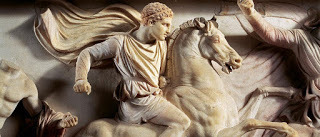
323 BC (or June 11) Alexander the Great, Macedonian king, died from either fever or excessive wine at the age of 32

323 BC (or June 11) Alexander the Great, Macedonian king, died from either fever or excessive wine at the age of 32
Published on June 10, 2016 02:00
June 9, 2016
Newly Discovered Ancient Roman Writing Tablets Provide Snapshots of Roman-Era London
Ancient Origins
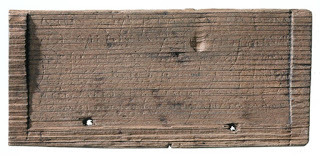 Recently discovered ancient British Roman texts on wax-covered wood tablets with legal, correspondence, note-taking and accounting documents have been translated, and researchers are now releasing their findings to the world. The researchers say the texts, discovered during construction of a new building, provide important insight into Roman-Britain times
Recently discovered ancient British Roman texts on wax-covered wood tablets with legal, correspondence, note-taking and accounting documents have been translated, and researchers are now releasing their findings to the world. The researchers say the texts, discovered during construction of a new building, provide important insight into Roman-Britain times
“In the words of the people who lived, worked, traded with and administered Roman London, the Bloomberg tablets reveal the names, events, workings and organisation of the new city. One tablet features the earliest ever reference to London, preceding Tacitus’ citing of London in his Annals by 50 years,” says a press release from Museum of London Archaeology.
Across the Roman Empire, people used the tablets as we use paper today. A large cache was discovered as preparations were being made to build the European headquarters of the media company Bloomberg.
 Roman writing tablets, 1st – 2nd century AD (
public domain
)Before the find of 405 wax tablets, only 19 decipherable Roman tablets were known in London. More than 80 of the new documents have been deciphered, “providing an incredibly rare and personal insight into the first decades of Roman rule in Britain,” says MOLA.
Roman writing tablets, 1st – 2nd century AD (
public domain
)Before the find of 405 wax tablets, only 19 decipherable Roman tablets were known in London. More than 80 of the new documents have been deciphered, “providing an incredibly rare and personal insight into the first decades of Roman rule in Britain,” says MOLA.
One highlight from the tablet includes evidence of Julius Classicus, who led the Batavian revolt. Earlier on, in London, he was the prefect of the Sixth Cohort of the Nervians just after London was settled by Rome. In Rome, a cohort was a military unit consisting of 300 to 600 men and was one-tenth of a legion.
Batavia was located in what is now know as Netherlands. The Batavian revolt was in 69 and 70 AD. Some of the Roman troops defected to the rebels’ side, an event that Tacitus called “a deed of shame quite without parallel.”
 Batavians defeating the Romans (
public domain
)The team of researchers dated one tablet to between 43 and 53 AD, the period during which the Romans conquered Britain. Another contains the first reference to London, from between 65 and 80 AD.
Batavians defeating the Romans (
public domain
)The team of researchers dated one tablet to between 43 and 53 AD, the period during which the Romans conquered Britain. Another contains the first reference to London, from between 65 and 80 AD.
The documents include a contract to bring 20 loads of provisions to London from Verulamium. This was on Oct. 21, 62 AD—about a year after Boudica’s revolt against the Romans, during which she and her troops overran and burned London. The tablet gives evidence of how quickly the Romans re-established London.
Museum of London Archaeology just earlier this month announced that they had found evidence of the rebuilding of London after Boudica’s rebellion. Ancient Origins published a story on the find.
Around 60 AD Queen Boudica of the Iceni (a Celtic clan) attacked. Researchers announced that in response to Boudica’s revolution, the Romans built a fort at London with ditches 10 feet (3.05 meters) deep, walls 10 feet high, palisades, and a platform from which to repel attacks.
 Reconstruction of Fort in London. Source: MOLAAnother document deciphered by MOLA lists the names of almost 100 people involved in various professions, including judge, brewer, cooper, soldiers, slaves and freemen. The names show the people were likely from the Rhineland and Gaul and that London’s population consisted largely of soldiers and businessmen, the news release states
Reconstruction of Fort in London. Source: MOLAAnother document deciphered by MOLA lists the names of almost 100 people involved in various professions, including judge, brewer, cooper, soldiers, slaves and freemen. The names show the people were likely from the Rhineland and Gaul and that London’s population consisted largely of soldiers and businessmen, the news release states
Also, there is a tablet upon which a person practiced writing numerals and the alphabet. This tablet is considered the first evidence for schooling in Britain.
The earliest dated handwritten document in Britain was among the texts. It was a financial document from January 8, 57 AD.
The tablets survived because they had become buried in the wet mud of the river Walbrook, which was aboveground during Roman times but has since become buried. The mud kept oxygen from decaying the tablets, and they are in fine condition. Wood usually disintegrates over time when it is buried.
After excavating the tablets, the team kept them in water until MOLA conservators could clean them and treat them with a waxy substance that replaced some of the water content. They then freeze-dried the tablets.
 Example of a wax tablet with Roman stylus (
public domain
)“Made of wood, recesses in the rectangular tablets were originally filled with blackened beeswax, with text inscribed into the wax with styluses. Although the wax hasn’t survived, the writing occasionally went through the wax to mark the wood. As tablets were reused, in some cases several layers of text built up on the tablets, making them particularly challenging to decode,” MOLA states.
Example of a wax tablet with Roman stylus (
public domain
)“Made of wood, recesses in the rectangular tablets were originally filled with blackened beeswax, with text inscribed into the wax with styluses. Although the wax hasn’t survived, the writing occasionally went through the wax to mark the wood. As tablets were reused, in some cases several layers of text built up on the tablets, making them particularly challenging to decode,” MOLA states.
Roger Tomlin, a classicist and cursive Latin expert, was in charge of the deciphering and interpretation of the tablets. He used photography with raking light and microscopes to analyze the tablets. Plus, says MOLA, he has encyclopedic knowledge of Roman-era Britain and has experience reconstructing Roman texts from incomplete remains.
The new Bloomberg building will include an exhibition space with 700 artifacts from the excavations on the site, including the earliest writing tablet known from ancient Britain. It will open in fall 2017.
Top image: Roman writing tablet, AD 43 – 53. Credit: Museum of London Archaeology
By Mark Miller
 Recently discovered ancient British Roman texts on wax-covered wood tablets with legal, correspondence, note-taking and accounting documents have been translated, and researchers are now releasing their findings to the world. The researchers say the texts, discovered during construction of a new building, provide important insight into Roman-Britain times
Recently discovered ancient British Roman texts on wax-covered wood tablets with legal, correspondence, note-taking and accounting documents have been translated, and researchers are now releasing their findings to the world. The researchers say the texts, discovered during construction of a new building, provide important insight into Roman-Britain times“In the words of the people who lived, worked, traded with and administered Roman London, the Bloomberg tablets reveal the names, events, workings and organisation of the new city. One tablet features the earliest ever reference to London, preceding Tacitus’ citing of London in his Annals by 50 years,” says a press release from Museum of London Archaeology.
Across the Roman Empire, people used the tablets as we use paper today. A large cache was discovered as preparations were being made to build the European headquarters of the media company Bloomberg.
 Roman writing tablets, 1st – 2nd century AD (
public domain
)Before the find of 405 wax tablets, only 19 decipherable Roman tablets were known in London. More than 80 of the new documents have been deciphered, “providing an incredibly rare and personal insight into the first decades of Roman rule in Britain,” says MOLA.
Roman writing tablets, 1st – 2nd century AD (
public domain
)Before the find of 405 wax tablets, only 19 decipherable Roman tablets were known in London. More than 80 of the new documents have been deciphered, “providing an incredibly rare and personal insight into the first decades of Roman rule in Britain,” says MOLA.One highlight from the tablet includes evidence of Julius Classicus, who led the Batavian revolt. Earlier on, in London, he was the prefect of the Sixth Cohort of the Nervians just after London was settled by Rome. In Rome, a cohort was a military unit consisting of 300 to 600 men and was one-tenth of a legion.
Batavia was located in what is now know as Netherlands. The Batavian revolt was in 69 and 70 AD. Some of the Roman troops defected to the rebels’ side, an event that Tacitus called “a deed of shame quite without parallel.”
 Batavians defeating the Romans (
public domain
)The team of researchers dated one tablet to between 43 and 53 AD, the period during which the Romans conquered Britain. Another contains the first reference to London, from between 65 and 80 AD.
Batavians defeating the Romans (
public domain
)The team of researchers dated one tablet to between 43 and 53 AD, the period during which the Romans conquered Britain. Another contains the first reference to London, from between 65 and 80 AD.The documents include a contract to bring 20 loads of provisions to London from Verulamium. This was on Oct. 21, 62 AD—about a year after Boudica’s revolt against the Romans, during which she and her troops overran and burned London. The tablet gives evidence of how quickly the Romans re-established London.
Museum of London Archaeology just earlier this month announced that they had found evidence of the rebuilding of London after Boudica’s rebellion. Ancient Origins published a story on the find.
Around 60 AD Queen Boudica of the Iceni (a Celtic clan) attacked. Researchers announced that in response to Boudica’s revolution, the Romans built a fort at London with ditches 10 feet (3.05 meters) deep, walls 10 feet high, palisades, and a platform from which to repel attacks.
 Reconstruction of Fort in London. Source: MOLAAnother document deciphered by MOLA lists the names of almost 100 people involved in various professions, including judge, brewer, cooper, soldiers, slaves and freemen. The names show the people were likely from the Rhineland and Gaul and that London’s population consisted largely of soldiers and businessmen, the news release states
Reconstruction of Fort in London. Source: MOLAAnother document deciphered by MOLA lists the names of almost 100 people involved in various professions, including judge, brewer, cooper, soldiers, slaves and freemen. The names show the people were likely from the Rhineland and Gaul and that London’s population consisted largely of soldiers and businessmen, the news release statesAlso, there is a tablet upon which a person practiced writing numerals and the alphabet. This tablet is considered the first evidence for schooling in Britain.
The earliest dated handwritten document in Britain was among the texts. It was a financial document from January 8, 57 AD.
The tablets survived because they had become buried in the wet mud of the river Walbrook, which was aboveground during Roman times but has since become buried. The mud kept oxygen from decaying the tablets, and they are in fine condition. Wood usually disintegrates over time when it is buried.
After excavating the tablets, the team kept them in water until MOLA conservators could clean them and treat them with a waxy substance that replaced some of the water content. They then freeze-dried the tablets.
 Example of a wax tablet with Roman stylus (
public domain
)“Made of wood, recesses in the rectangular tablets were originally filled with blackened beeswax, with text inscribed into the wax with styluses. Although the wax hasn’t survived, the writing occasionally went through the wax to mark the wood. As tablets were reused, in some cases several layers of text built up on the tablets, making them particularly challenging to decode,” MOLA states.
Example of a wax tablet with Roman stylus (
public domain
)“Made of wood, recesses in the rectangular tablets were originally filled with blackened beeswax, with text inscribed into the wax with styluses. Although the wax hasn’t survived, the writing occasionally went through the wax to mark the wood. As tablets were reused, in some cases several layers of text built up on the tablets, making them particularly challenging to decode,” MOLA states.Roger Tomlin, a classicist and cursive Latin expert, was in charge of the deciphering and interpretation of the tablets. He used photography with raking light and microscopes to analyze the tablets. Plus, says MOLA, he has encyclopedic knowledge of Roman-era Britain and has experience reconstructing Roman texts from incomplete remains.
The new Bloomberg building will include an exhibition space with 700 artifacts from the excavations on the site, including the earliest writing tablet known from ancient Britain. It will open in fall 2017.
Top image: Roman writing tablet, AD 43 – 53. Credit: Museum of London Archaeology
By Mark Miller
Published on June 09, 2016 03:00
History Trivia - Nero commits suicide
June 9
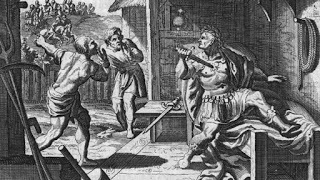
68 The Roman emperor Nero was deposed and committed suicide, ending the Julian-Claudian imperial dynasty.

68 The Roman emperor Nero was deposed and committed suicide, ending the Julian-Claudian imperial dynasty.
Published on June 09, 2016 02:00
June 8, 2016
Precious Dagger of Tutankhamun Found to be of Meteoric Origin
Ancient Origins
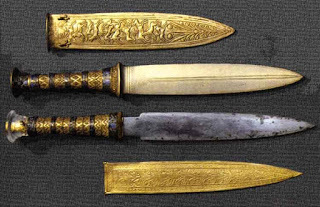
In an exciting new find, a team of researchers have confirmed that the iron in one of the daggers found in the tomb of Tutankhamun, as well as a number of other precious artifacts from Ancient Egypt, have celestial origins as they were made from meteorites.
According to In 2014, The Guardian presented the research of Diane Johnson from the Open University and Joyce Tyldesley from the University of Manchester. They examined artifacts discovered in the Gerzeh cemetery, 70km south of Cairo, dating from 3600 BC to 3350 BC. The burial of a man contained an ivory pot, copper harpoon, bead jewelry made of gold and iron, and more. A few rare examples of iron artifacts have also been unearthed in other places. The most impressive examples were discovered in the tomb of Tutankhamun, including a dagger and iron amulet on a gold bracelet. Johnson and Tyldesley used the electron microscope and the micro x-ray computer tomography to scrutinize the surface of the artifacts. They also examined the iron beads from the Gerzeh tomb, and discovered that the structure and chemistry of the iron suggested a meteoric origin.
The most recent research confirmed that Johnson and Tyldesley were right. The composition of iron used in Tutankhamun's dagger, is nickel and cobalt, which is commonly found in meteorites. In addition, the study of the iron beads from Gerzeh, which are c. 5,000 years old, confirmed that in the times of the 18th dynasty, ancient Egyptians were advanced in working iron and that the iron used to create them comes from meteorite. Previously, it had been believed that the Egyptian Iron Age started after 600 BC.
 Close up of the Gerzeh bead made from meteoritic iron. Image credit: Open University / University of ManchesterAccording to the authors of the research:
Close up of the Gerzeh bead made from meteoritic iron. Image credit: Open University / University of ManchesterAccording to the authors of the research:
In Ancient Egypt people started to make jewelry not later than around 4,000 BC. It is unknown why they did start using the meteoric iron, but it seems that ancient people in many parts of the world worshiped the stones, which came from the sky. The same kind of the iron structure was discovered in two Chinese blades from 1000 BC, and in Native American iron beads from the Hopewell burial mounds in Illinois from 400 BC.
According to the article by Liz Leafloor from Ancient Origins:
 The Hoba meteorite is the largest known meteorite found on Earth, as well as the largest naturally-occurring mass of iron known to exist on the earth. The meteorite, named after the Hoba West Farm in Grootfontein, Namibia where it was discovered in 1920, has not been moved since it landed on Earth over 80,000 years ago.
(public domain
)Meteorites, have been important in religions and cultures of many civilizations. Ancient Greeks and Romans believed that they were gifts of the Gods. In ancient Greece, meteorites were held at Apollo's temple at Delphi as objects of veneration. Even the shrine of Islam in Mecca holds a stone, which is believed to be a meteorite.
The Hoba meteorite is the largest known meteorite found on Earth, as well as the largest naturally-occurring mass of iron known to exist on the earth. The meteorite, named after the Hoba West Farm in Grootfontein, Namibia where it was discovered in 1920, has not been moved since it landed on Earth over 80,000 years ago.
(public domain
)Meteorites, have been important in religions and cultures of many civilizations. Ancient Greeks and Romans believed that they were gifts of the Gods. In ancient Greece, meteorites were held at Apollo's temple at Delphi as objects of veneration. Even the shrine of Islam in Mecca holds a stone, which is believed to be a meteorite.
Top image: These daggers were from within Tutankhamun's burial wrappings. The top one of made of gold and the lower, significantly rarer, made from meteorite. ( ancient-egypt.co.uk )
By Natalia Klimczak

In an exciting new find, a team of researchers have confirmed that the iron in one of the daggers found in the tomb of Tutankhamun, as well as a number of other precious artifacts from Ancient Egypt, have celestial origins as they were made from meteorites.
According to In 2014, The Guardian presented the research of Diane Johnson from the Open University and Joyce Tyldesley from the University of Manchester. They examined artifacts discovered in the Gerzeh cemetery, 70km south of Cairo, dating from 3600 BC to 3350 BC. The burial of a man contained an ivory pot, copper harpoon, bead jewelry made of gold and iron, and more. A few rare examples of iron artifacts have also been unearthed in other places. The most impressive examples were discovered in the tomb of Tutankhamun, including a dagger and iron amulet on a gold bracelet. Johnson and Tyldesley used the electron microscope and the micro x-ray computer tomography to scrutinize the surface of the artifacts. They also examined the iron beads from the Gerzeh tomb, and discovered that the structure and chemistry of the iron suggested a meteoric origin.
The most recent research confirmed that Johnson and Tyldesley were right. The composition of iron used in Tutankhamun's dagger, is nickel and cobalt, which is commonly found in meteorites. In addition, the study of the iron beads from Gerzeh, which are c. 5,000 years old, confirmed that in the times of the 18th dynasty, ancient Egyptians were advanced in working iron and that the iron used to create them comes from meteorite. Previously, it had been believed that the Egyptian Iron Age started after 600 BC.
 Close up of the Gerzeh bead made from meteoritic iron. Image credit: Open University / University of ManchesterAccording to the authors of the research:
Close up of the Gerzeh bead made from meteoritic iron. Image credit: Open University / University of ManchesterAccording to the authors of the research:''The celestial or terrestrial origin of ancient Egyptian iron, and when its usage became common are contentious issues, which are subject to debate. Evidence is drawn from many areas, including architecture, language, and belief.''The researchers suggest that meteoric iron may have been very important in Egyptian culture and religion. The iron in the blade of the knife from Tutankhamun's tomb came from one of the many meteorites that has fallen in the desert.
In Ancient Egypt people started to make jewelry not later than around 4,000 BC. It is unknown why they did start using the meteoric iron, but it seems that ancient people in many parts of the world worshiped the stones, which came from the sky. The same kind of the iron structure was discovered in two Chinese blades from 1000 BC, and in Native American iron beads from the Hopewell burial mounds in Illinois from 400 BC.
According to the article by Liz Leafloor from Ancient Origins:
''Back on Earth, meteorites have long fascinated humanity. Ancient man was in awe of and feared what were seen as unfathomable events in the skies. Modern science can now explain the meteor showers, lightning and thunder, aurora lights, and eclipses that inspired myths, religions, and legends. In antiquity meteorites were seen as messages from the gods, or profound omens.
The worship of celestial rocks continues even with modern meteorites. The ‘Church of the Meteorite’ was set up in Chelyabinsk after a meteor rocked the Russian region in 2013 and injured over 1500 people.''
 The Hoba meteorite is the largest known meteorite found on Earth, as well as the largest naturally-occurring mass of iron known to exist on the earth. The meteorite, named after the Hoba West Farm in Grootfontein, Namibia where it was discovered in 1920, has not been moved since it landed on Earth over 80,000 years ago.
(public domain
)Meteorites, have been important in religions and cultures of many civilizations. Ancient Greeks and Romans believed that they were gifts of the Gods. In ancient Greece, meteorites were held at Apollo's temple at Delphi as objects of veneration. Even the shrine of Islam in Mecca holds a stone, which is believed to be a meteorite.
The Hoba meteorite is the largest known meteorite found on Earth, as well as the largest naturally-occurring mass of iron known to exist on the earth. The meteorite, named after the Hoba West Farm in Grootfontein, Namibia where it was discovered in 1920, has not been moved since it landed on Earth over 80,000 years ago.
(public domain
)Meteorites, have been important in religions and cultures of many civilizations. Ancient Greeks and Romans believed that they were gifts of the Gods. In ancient Greece, meteorites were held at Apollo's temple at Delphi as objects of veneration. Even the shrine of Islam in Mecca holds a stone, which is believed to be a meteorite.Top image: These daggers were from within Tutankhamun's burial wrappings. The top one of made of gold and the lower, significantly rarer, made from meteorite. ( ancient-egypt.co.uk )
By Natalia Klimczak
Published on June 08, 2016 03:00
History Trivia - Vikings raid the abbey at Lindisfarne
June 8
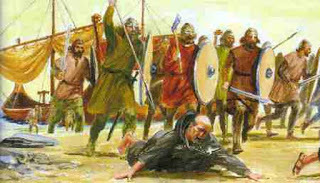
793 Vikings raid the abbey at Lindisfarne in Northumbria, and is commonly accepted as the beginning of the Scandinavian invasion of England.
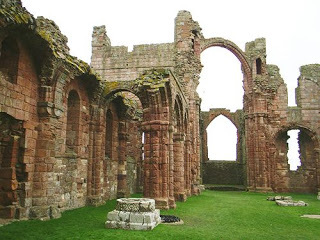

793 Vikings raid the abbey at Lindisfarne in Northumbria, and is commonly accepted as the beginning of the Scandinavian invasion of England.

Published on June 08, 2016 02:00
June 7, 2016
8 Viking myths busted
History Extra
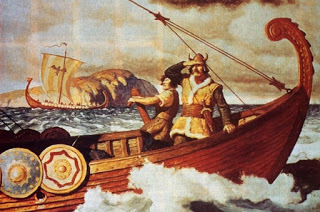
An image of Viking sailors making the voyage across the Atlantic between Europe and America. One sailor is seen wearing a horned helmet. In reality, says Janina Ramirez, Viking helmets would have been simple skullcaps. Painting by NC Wyeth, c1350. (Image by Hulton Archive/Getty Images)
The Viking Age stretched from the ninth to the 11th century. During this time Viking culture had a huge impact on great swathes of Europe, Asia, Africa and even America – many centuries before Columbus sailed the oceans. They could navigate the known world and commanded respect wherever they went. Yet the Vikings are surrounded by myths. Here are eight of them busted…
Myth 1: They wore horned helmetsLet’s get this out of the way straight off. There is no evidence that the Vikings wore horned helmets, and nothing like this has ever been discovered in any archaeological dig. They certainly wore helmets but they would have been simple skullcaps, designed to protect the head from impact. Having a pair of horns on your head in battle would not have been helpful if warriors were striking at you with clubs, swords or axes.
The helmet plaques from Sutton Hoo and Vendel suggest that god-like warriors donned helmets with protruding ‘horns’ (although these are actually hook-beaked birds), but the Viking raiders and traders did not.
The modern idea of Vikings in horned helmets originated in the 19th century, but it was Richard Wagner’s The Ring Cycle [a cycle of four operas by the German composer based loosely on characters from the Norse sagas] that seared it into the modern imagination. Costume designer Carl Emil Doepler (1824–1905) created horned helmets in the 1870s for the Viking characters, and so the myth was born. Numerous cartoonists, filmmakers and artists have continued this fantasy right up to the present day.
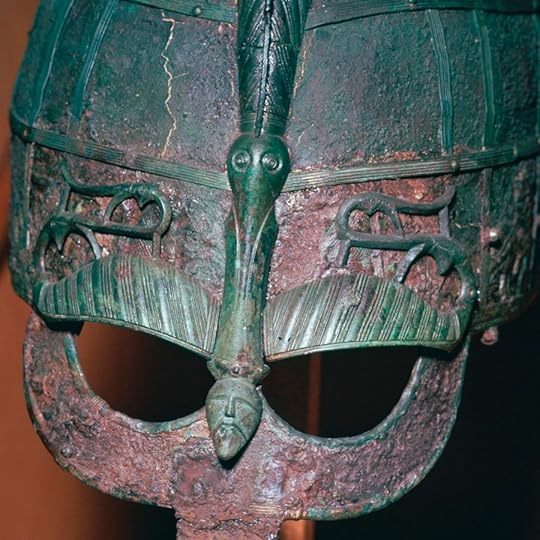
Detail of a Viking helmet from grave one at Vendel, Uppland, Sweden, 7th century. In the Swedish History Museum’s collection in Stockholm. (Photo by CM Dixon/Print Collector/Getty Images)
Myth 2: They were a defined group – ‘The Vikings’The term ‘Viking’ comes from Old Icelandic ‘Viking-r, a creek-dweller’. The Viken was the primary mercantile region of Norway, so it is possible that this apparently homogenous group of people got their name from the extensive trading they undertook out of their busy ports. The word ‘Viking’ later becomes synonymous with ‘naval raids/naval expeditions’ and begins to function more as a verb. Individuals or groups would go ‘a-Viking’, which would mean they would leave their native lands during the warmer summer months, travelling in longboats to regions where they could trade and raid.
Contemporary writers don’t use the term ‘Viking’ to speak of a group of people. Instead they referred to Norse Men, people from the North, or simply pagans (remember, those recording events were usually Christian scribes). What’s more misleading still is that ‘Viking’ has been used to denote the entire Scandinavian region, including Denmark, Norway and Sweden. Each of these regions was governed by different leaders and they would have seen themselves as distinct from one another.
These were also very varied landscapes. The more northern regions, particularly the mountainous areas of Norway, were difficult to farm because of hostile weather, while southern parts, in the plains of Denmark, were more fertile. There were occasions when Scandinavian rulers combined their forces for greater military might, but the term ‘Viking’ is like describing all ‘Northern Europeans’ as the same.
Myth 3: They were extremely violentThe Vikings earned a place in history due to their protracted raids on often vulnerable monastic sites. Populated by literate scribes, these were the worst places to attack if you wanted a good record in Christian historical documents. Alcuin of York wrote to Bishop Higbald, declaring: “Never before has such terror appeared in Britain as we have now suffered from a pagan race. . . .The heathens poured out the blood of saints around the altar, and trampled on the bodies of saints in the temple of God, like dung in the streets.”
There is certainly evidence of the violent means Vikings used to suppress people, particularly in Britain. Many skeletons have been found with the instruments of their death still wedged in their bones. A skeleton in the North Hertfordshire Museum has a Viking spear head stuck in its neck. However, while some Vikings clearly deserved their reputation as ‘wolves of war’, others lived peaceful existences – farming, trading and integrating across the four continents that they settled.
What’s more, these were violent times, and the Vikings’ aggression was matched or exceeded by other groups during this period. One of the most famous names of the early medieval period, Emperor Charlemagne, carried out a form of genocide on people in Saxony. In the ‘Massacre of Verden’ in AD 782 his army murdered more than 4,500 Saxons who had been given to him by an ally. This was violence at its most stark. And yet, because Charlemagne had a Christian biographer writing a favorable account of his life, was killing pagans and was seen as ‘father of the church’, his place in history was secure.
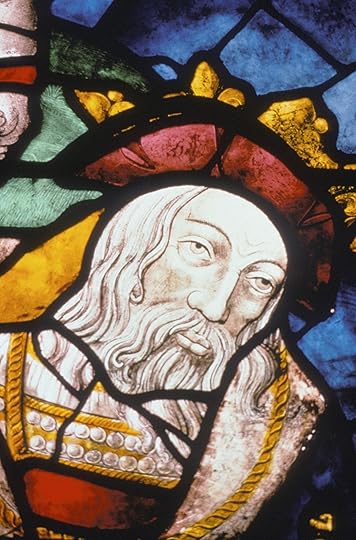
11th-century stained glass representing Emperor Charlemagne c800 in Saint-Saulge, France. (Photo by Keystone-France/Gamma-Keystine via Getty Images)
Myth 4: They took what they wanted and sailed awayFinds from Scandinavia do indicate that many Vikings pillaged the places they reached, bringing back coins from across the known world to be buried in hoards back in their homelands. However, many chose to remain in the lands they encountered, establishing lasting and important settlements.
One of the earliest and most extensive Viking settlements was Dublin, established by AD 841. Dublin grew into an industrially strong city with a thriving port and a mint where the first Irish coins were made. It wasn’t just Dublin that changed and developed under the Vikings. In York, the Anglo-Saxon city was relocated further towards the mouth of the river and settled by Vikings as a new and vibrant town – Jorvik. Iceland owes its settlement almost entirely to Vikings, under Ingólfr Arnanson in AD 874.
Normandy is another example of how Viking settlement could grow from violence into peaceful settlement. The Normans got their name from being ‘north-men’, yet they were given land in the north of France by king Charles III (aka Charles the Simple, 879–929) in an attempt to keep further Viking attacks at bay. Charles even gave his daughter to the Norwegian chieftain Rollo [who gained Normandy from Charles the Simple] in marriage, and the Viking settlers soon embraced French language and culture to develop into a new breed of conquerors.
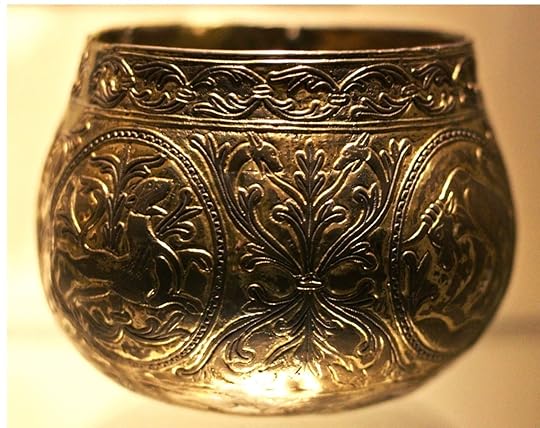
Decorative Viking hoard cup made from gold and decorated with animals and foliate patterns. Found buried in England. (Photo by Universal History Archive/UIG via Getty Images)
Myth 5: They were godless pagansThey say history is written by the victors, but in the case of the Vikings, history is written by Christians. This meant that while few accounts of Viking religion survive, there are many documents written by Christian scribes that describe them as pagan and godless. This is not supported by the information we can glean from archaeology and later Scandinavian texts.
Viking religion was structured, hierarchical and based on a number of established narratives. It was not a religion of the book, and the mythology was transmitted orally.
The Vikings didn’t practise their religion in temples but rather, like the ancient Celts, held places like groves and rivers sacred. It seems that priests were involved in religious ceremonies, and these were drawn from the heads of families. Priestly office was one of the honours bestowed on kings. The priest would perform sacrifices, either of objects, animals or people.
Viking cosmology differentiated between life on Earth – Midgard – and other spiritual realms. The gods were thought to inhabit Asgard, while the sacred tree Ysgadrill stretched its roots to the lands of the gods, giants and the dead. There were at least six realms, with a special place reserved for warriors – Valhalla.
Myth 6: They were ignorant and illiterate barbariansThe Vikings were not the ignorant and illiterate barbarians that Christian writers of the time believed them to be. While they didn’t write long texts like the Sagas until later in the Viking Age, they had developed a complex script – runes – that was loaded with symbolism. Each letter in the runic alphabet was also connected with a word; the ‘f’ rune was called ‘feoh’, which meant ‘wealth’ or ‘cattle’ – this makes sense within a barter society, as cattle hides were a way of measuring wealth.
Runes could carry spiritual meaning too, and texts record how certain runes were connected with specific gods or goddesses. Rune stones included lengthy dedications and personal names. Smaller inscriptions survive on personal items like combs and weapons.
Far from illiterate barbarians, the Vikings were some of the greatest naval engineers and travellers the world had seen. Prehistoric carvings and stone ships testify to the importance of boats within prehistoric Scandinavian society and religion. By the ninth century they had developed advanced ships that could traverse the hostile Northern Atlantic Ocean. They travelled further than any single race before the modern age, and took huge risks whenever they set out on a voyage.
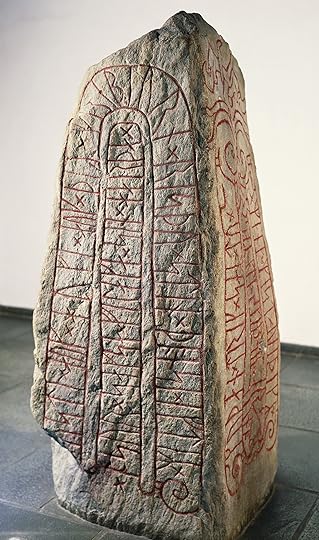
Viking runestone. (Photo By DEA/G DAGLI ORTI/De Agostini/Getty Images)
Myth 7: They treated their women badlyViking society was mainly governed by ‘jarls’, the most important of whom could become kings. It was a largely military society, in which strength at arms was prized, yet wise and learned men and women could also wield power.
Women played an important role in Viking society. They were guardians of the keys to both property and wealth, particularly when their menfolk were abroad. There is evidence that some were trained to be military leaders too, with shield-maidens described throughout the mythology. Women were held in high esteem, with two buried within the famous Oseberg ship.
One of the most venerated characters in the Germanic pantheon was Freyja, goddess of sex, beauty, gold and death. She rides a chariot pulled by two cats and is accompanied by the boar Hildisvini.
Women did seem to have spiritual roles within Viking society, with wands discovered in many female graves. Furthermore, they had significantly better legal rights than their Christian counterparts and could divorce their husbands if they were violent or disrespectful towards them.
Myth 8: They were beardy and unkemptFar from unkempt barbarians, Viking men and women were quite vain. Many finds like tweezers, combs and razors have been discovered, and it seems they went to great pains over their appearance.
They didn’t live in dark, dirty huts, but often in large and luxurious halls, like the magnificent ‘Heorot’ recorded in the epic poem Beowulf, which was the setting for lavish feasts, gifts of gold and display of skills at arms.

Viking period bone and deer antler comb and case from the Viking settlement at York, which is in the Yorkshire Museum, York. (Photo by CM Dixon/Print Collector/Getty Images)
The Vikings also had a good diet, which included a lot of fish – unsurprising given that most settlements were near to the coast. Evidence of Viking latrines shows they feasted on elk, bear, puffin, salmon and trout.
Dr Janina Ramirez is a British art and cultural historian and television presenter. She presented a BBC documentary on Icelandic literature, The Viking Sagas, and is author of The Private Lives of the Saints: Power, Passion and Politics in Anglo-Saxon England. To find out more, visit www.janinaramirez.co.uk

An image of Viking sailors making the voyage across the Atlantic between Europe and America. One sailor is seen wearing a horned helmet. In reality, says Janina Ramirez, Viking helmets would have been simple skullcaps. Painting by NC Wyeth, c1350. (Image by Hulton Archive/Getty Images)
The Viking Age stretched from the ninth to the 11th century. During this time Viking culture had a huge impact on great swathes of Europe, Asia, Africa and even America – many centuries before Columbus sailed the oceans. They could navigate the known world and commanded respect wherever they went. Yet the Vikings are surrounded by myths. Here are eight of them busted…
Myth 1: They wore horned helmetsLet’s get this out of the way straight off. There is no evidence that the Vikings wore horned helmets, and nothing like this has ever been discovered in any archaeological dig. They certainly wore helmets but they would have been simple skullcaps, designed to protect the head from impact. Having a pair of horns on your head in battle would not have been helpful if warriors were striking at you with clubs, swords or axes.
The helmet plaques from Sutton Hoo and Vendel suggest that god-like warriors donned helmets with protruding ‘horns’ (although these are actually hook-beaked birds), but the Viking raiders and traders did not.
The modern idea of Vikings in horned helmets originated in the 19th century, but it was Richard Wagner’s The Ring Cycle [a cycle of four operas by the German composer based loosely on characters from the Norse sagas] that seared it into the modern imagination. Costume designer Carl Emil Doepler (1824–1905) created horned helmets in the 1870s for the Viking characters, and so the myth was born. Numerous cartoonists, filmmakers and artists have continued this fantasy right up to the present day.

Detail of a Viking helmet from grave one at Vendel, Uppland, Sweden, 7th century. In the Swedish History Museum’s collection in Stockholm. (Photo by CM Dixon/Print Collector/Getty Images)
Myth 2: They were a defined group – ‘The Vikings’The term ‘Viking’ comes from Old Icelandic ‘Viking-r, a creek-dweller’. The Viken was the primary mercantile region of Norway, so it is possible that this apparently homogenous group of people got their name from the extensive trading they undertook out of their busy ports. The word ‘Viking’ later becomes synonymous with ‘naval raids/naval expeditions’ and begins to function more as a verb. Individuals or groups would go ‘a-Viking’, which would mean they would leave their native lands during the warmer summer months, travelling in longboats to regions where they could trade and raid.
Contemporary writers don’t use the term ‘Viking’ to speak of a group of people. Instead they referred to Norse Men, people from the North, or simply pagans (remember, those recording events were usually Christian scribes). What’s more misleading still is that ‘Viking’ has been used to denote the entire Scandinavian region, including Denmark, Norway and Sweden. Each of these regions was governed by different leaders and they would have seen themselves as distinct from one another.
These were also very varied landscapes. The more northern regions, particularly the mountainous areas of Norway, were difficult to farm because of hostile weather, while southern parts, in the plains of Denmark, were more fertile. There were occasions when Scandinavian rulers combined their forces for greater military might, but the term ‘Viking’ is like describing all ‘Northern Europeans’ as the same.
Myth 3: They were extremely violentThe Vikings earned a place in history due to their protracted raids on often vulnerable monastic sites. Populated by literate scribes, these were the worst places to attack if you wanted a good record in Christian historical documents. Alcuin of York wrote to Bishop Higbald, declaring: “Never before has such terror appeared in Britain as we have now suffered from a pagan race. . . .The heathens poured out the blood of saints around the altar, and trampled on the bodies of saints in the temple of God, like dung in the streets.”
There is certainly evidence of the violent means Vikings used to suppress people, particularly in Britain. Many skeletons have been found with the instruments of their death still wedged in their bones. A skeleton in the North Hertfordshire Museum has a Viking spear head stuck in its neck. However, while some Vikings clearly deserved their reputation as ‘wolves of war’, others lived peaceful existences – farming, trading and integrating across the four continents that they settled.
What’s more, these were violent times, and the Vikings’ aggression was matched or exceeded by other groups during this period. One of the most famous names of the early medieval period, Emperor Charlemagne, carried out a form of genocide on people in Saxony. In the ‘Massacre of Verden’ in AD 782 his army murdered more than 4,500 Saxons who had been given to him by an ally. This was violence at its most stark. And yet, because Charlemagne had a Christian biographer writing a favorable account of his life, was killing pagans and was seen as ‘father of the church’, his place in history was secure.

11th-century stained glass representing Emperor Charlemagne c800 in Saint-Saulge, France. (Photo by Keystone-France/Gamma-Keystine via Getty Images)
Myth 4: They took what they wanted and sailed awayFinds from Scandinavia do indicate that many Vikings pillaged the places they reached, bringing back coins from across the known world to be buried in hoards back in their homelands. However, many chose to remain in the lands they encountered, establishing lasting and important settlements.
One of the earliest and most extensive Viking settlements was Dublin, established by AD 841. Dublin grew into an industrially strong city with a thriving port and a mint where the first Irish coins were made. It wasn’t just Dublin that changed and developed under the Vikings. In York, the Anglo-Saxon city was relocated further towards the mouth of the river and settled by Vikings as a new and vibrant town – Jorvik. Iceland owes its settlement almost entirely to Vikings, under Ingólfr Arnanson in AD 874.
Normandy is another example of how Viking settlement could grow from violence into peaceful settlement. The Normans got their name from being ‘north-men’, yet they were given land in the north of France by king Charles III (aka Charles the Simple, 879–929) in an attempt to keep further Viking attacks at bay. Charles even gave his daughter to the Norwegian chieftain Rollo [who gained Normandy from Charles the Simple] in marriage, and the Viking settlers soon embraced French language and culture to develop into a new breed of conquerors.

Decorative Viking hoard cup made from gold and decorated with animals and foliate patterns. Found buried in England. (Photo by Universal History Archive/UIG via Getty Images)
Myth 5: They were godless pagansThey say history is written by the victors, but in the case of the Vikings, history is written by Christians. This meant that while few accounts of Viking religion survive, there are many documents written by Christian scribes that describe them as pagan and godless. This is not supported by the information we can glean from archaeology and later Scandinavian texts.
Viking religion was structured, hierarchical and based on a number of established narratives. It was not a religion of the book, and the mythology was transmitted orally.
The Vikings didn’t practise their religion in temples but rather, like the ancient Celts, held places like groves and rivers sacred. It seems that priests were involved in religious ceremonies, and these were drawn from the heads of families. Priestly office was one of the honours bestowed on kings. The priest would perform sacrifices, either of objects, animals or people.
Viking cosmology differentiated between life on Earth – Midgard – and other spiritual realms. The gods were thought to inhabit Asgard, while the sacred tree Ysgadrill stretched its roots to the lands of the gods, giants and the dead. There were at least six realms, with a special place reserved for warriors – Valhalla.
Myth 6: They were ignorant and illiterate barbariansThe Vikings were not the ignorant and illiterate barbarians that Christian writers of the time believed them to be. While they didn’t write long texts like the Sagas until later in the Viking Age, they had developed a complex script – runes – that was loaded with symbolism. Each letter in the runic alphabet was also connected with a word; the ‘f’ rune was called ‘feoh’, which meant ‘wealth’ or ‘cattle’ – this makes sense within a barter society, as cattle hides were a way of measuring wealth.
Runes could carry spiritual meaning too, and texts record how certain runes were connected with specific gods or goddesses. Rune stones included lengthy dedications and personal names. Smaller inscriptions survive on personal items like combs and weapons.
Far from illiterate barbarians, the Vikings were some of the greatest naval engineers and travellers the world had seen. Prehistoric carvings and stone ships testify to the importance of boats within prehistoric Scandinavian society and religion. By the ninth century they had developed advanced ships that could traverse the hostile Northern Atlantic Ocean. They travelled further than any single race before the modern age, and took huge risks whenever they set out on a voyage.

Viking runestone. (Photo By DEA/G DAGLI ORTI/De Agostini/Getty Images)
Myth 7: They treated their women badlyViking society was mainly governed by ‘jarls’, the most important of whom could become kings. It was a largely military society, in which strength at arms was prized, yet wise and learned men and women could also wield power.
Women played an important role in Viking society. They were guardians of the keys to both property and wealth, particularly when their menfolk were abroad. There is evidence that some were trained to be military leaders too, with shield-maidens described throughout the mythology. Women were held in high esteem, with two buried within the famous Oseberg ship.
One of the most venerated characters in the Germanic pantheon was Freyja, goddess of sex, beauty, gold and death. She rides a chariot pulled by two cats and is accompanied by the boar Hildisvini.
Women did seem to have spiritual roles within Viking society, with wands discovered in many female graves. Furthermore, they had significantly better legal rights than their Christian counterparts and could divorce their husbands if they were violent or disrespectful towards them.
Myth 8: They were beardy and unkemptFar from unkempt barbarians, Viking men and women were quite vain. Many finds like tweezers, combs and razors have been discovered, and it seems they went to great pains over their appearance.
They didn’t live in dark, dirty huts, but often in large and luxurious halls, like the magnificent ‘Heorot’ recorded in the epic poem Beowulf, which was the setting for lavish feasts, gifts of gold and display of skills at arms.

Viking period bone and deer antler comb and case from the Viking settlement at York, which is in the Yorkshire Museum, York. (Photo by CM Dixon/Print Collector/Getty Images)
The Vikings also had a good diet, which included a lot of fish – unsurprising given that most settlements were near to the coast. Evidence of Viking latrines shows they feasted on elk, bear, puffin, salmon and trout.
Dr Janina Ramirez is a British art and cultural historian and television presenter. She presented a BBC documentary on Icelandic literature, The Viking Sagas, and is author of The Private Lives of the Saints: Power, Passion and Politics in Anglo-Saxon England. To find out more, visit www.janinaramirez.co.uk
Published on June 07, 2016 03:00
History Trivia - Eudocia Athenais marriea Byzantine Emperor Theodosius II
June 7
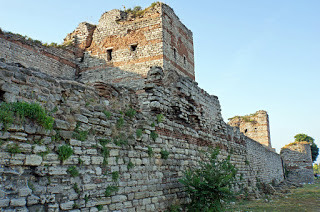
421 Eudocia Athenais married Byzantine Emperor Theodosius II who constructed a series of defensive walls that surrounded and protected the city of Constantinople

421 Eudocia Athenais married Byzantine Emperor Theodosius II who constructed a series of defensive walls that surrounded and protected the city of Constantinople
Published on June 07, 2016 02:00
June 6, 2016
Remembering our military - D-Day June 6, 1944
Published on June 06, 2016 06:14





